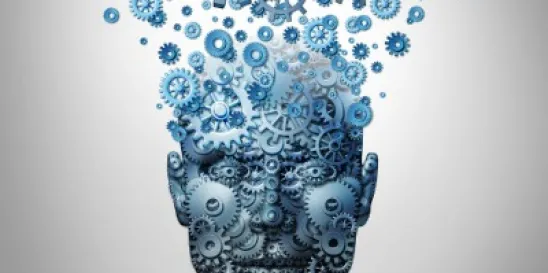The United States Patent and Trademark Office (USPTO) in a recent Federal Register notice sets forth some interesting, but somewhat vague, guidance on determining inventorship in Artificial Intelligence (AI)-assisted inventions. The USPTO confirms that only humans can be inventors and as such AI systems cannot be listed as inventors. The USPTO also sets forth that AI-assisted inventions are patentable and can include human inventors, provided that the human inventor significantly contributed to the underlying invention. The USPTO further cautions practitioners that they have an obligation to perform a reasonable inquiry into inventorship, especially with AI-assisted inventions, prior to filing a patent application.
The USPTO sets forth inventorship determination guidance that maintains the well settled position that only natural persons (e.g., humans) can be named as inventors in a patent application or patent, irrespective of whether AI systems were used to assist in the development of the underlying invention encompassed by the patent application or patent. Specifically, the USPTO guidance states that “inventorship is limited to natural person(s).” Since inventorship is limited to a natural person, then AI systems and machines per se cannot be named as an inventor in a patent application or patent. Referencing the Thaler v. Vidal case, the USPTO reiterated that “an inventor must be a natural person, and by extension, any joint inventor must be a natural person.” The USPTO further states that any patent application that names an AI system or machine as an inventor or joint inventor “will be considered by the USPTO to have improper inventorship.”
The USPTO further elaborated in the guidance that the determination of inventorship follows current case law, and only natural persons who “significantly contributed” to the underlying invention should be named as inventors. The natural persons can utilize AI models in creating the invention, but each person to be named as an inventor must have contributed significantly to the underlying invention. “While AI systems and other non-natural persons cannot be listed as inventors on patent applications or patents, the use of an AI system by a natural person(s) does not preclude a natural person(s) from qualifying as an inventor (or joint inventors) if the natural person(s) significantly contributed to the claimed invention…” This inventorship determination requirement is consistent with the incentives that pervade the Patent Laws. “The patent system is designed to encourage human ingenuity. From its very inception, patents were intended to incentivize human individuals to invent and thereby promote the progress of science and the useful arts. Focusing the patentability of AI-assisted inventions on the human contributions supports this policy objective by incentivizing human-centered activities and contributions, and by providing patent protections to inventions with significant human contributions while prohibiting patents on those that are not invented by natural persons. This approach supports the USPTO’s goal of helping to ensure our patent system strikes the right balance between protecting and incentivizing AI-assisted inventions and not hindering future human innovation by locking up innovation created without human ingenuity.”
With regard to the use of AI systems that assist in the creation of an invention, the USPTO further stated that “while an AI system may not be named an inventor or joint inventor in a patent application, an AI system— like other tools —may perform acts that, if performed by a human, could constitute inventorship under our laws.” The USPTO set forth a non-exhaustive list of general principles that should be considered when determining inventorship. The principles include the axiom that a “natural person can be listed as the inventor or joint inventor if the natural person contributes significantly to the AI-assisted invention.” Further, the principles set forth that merely recognizing a problem does not rise to the level of conception, and the person “who only presents a problem to an AI system may not be a proper inventor or joint inventor of an invention identified from the output of the AI system. However, a significant contribution could be shown by the way the person constructs the prompt in view of a specific problem to elicit a particular solution from the AI system.”
The USPTO guidance also reminds patent practitioners of their obligations and duties of candor and good faith in their dealings with the USPTO, and that this duty extends to inventorship determinations. Specifically, the USPTO states that patent practitioners have “a duty to disclose to the USPTO information that raises a prima facie case of unpatentability due to improper inventorship or that refutes, or is inconsistent with, a position an applicant takes in opposing an inventorship rejection or asserting inventorship. For example, in applications for AI-assisted inventions, this information could include evidence that demonstrates a named inventor did not significantly contribute to the invention because the person’s purported contribution(s) was made by an AI system.”
The USPTO further reminds patent practitioners that they need to perform a reasonable inquiry about inventorship. “Given the ubiquitous nature of AI, this inventorship inquiry could include questions about whether and how AI is being used in the invention creation process. In making inventorship determinations, it is appropriate to assess whether the contributions made by natural persons rise to the level of inventorship…” Having noted this, users of the patent system are left to wonder whether a detailed inventorship analysis and accompanying investigation needs to be conducted for each and every AI-assisted invention. Moreover, will the USPTO request or subsequently require an indication from Applicant that such an analysis was performed. If so, this would be a dramatic departure from current patent practice and would impose an undue burden on users of the patent system. Consequently, patent practitioners when handling inventions that employ AI systems, at a minimum, would be wise to discuss inventorship with their clients to determine the proper inventors, and when necessary, advise their clients that AI systems cannot be named an inventor.
Anthony A. Laurentano, Joseph "Joe" Damon, Leslie Green, Jackson Parese, Marc Jenkins, Jack Pringle, Michael J. Halaiko, Esq., and Alexandra P. Moylan, Esq. contributed to this article.









 />i
/>i
